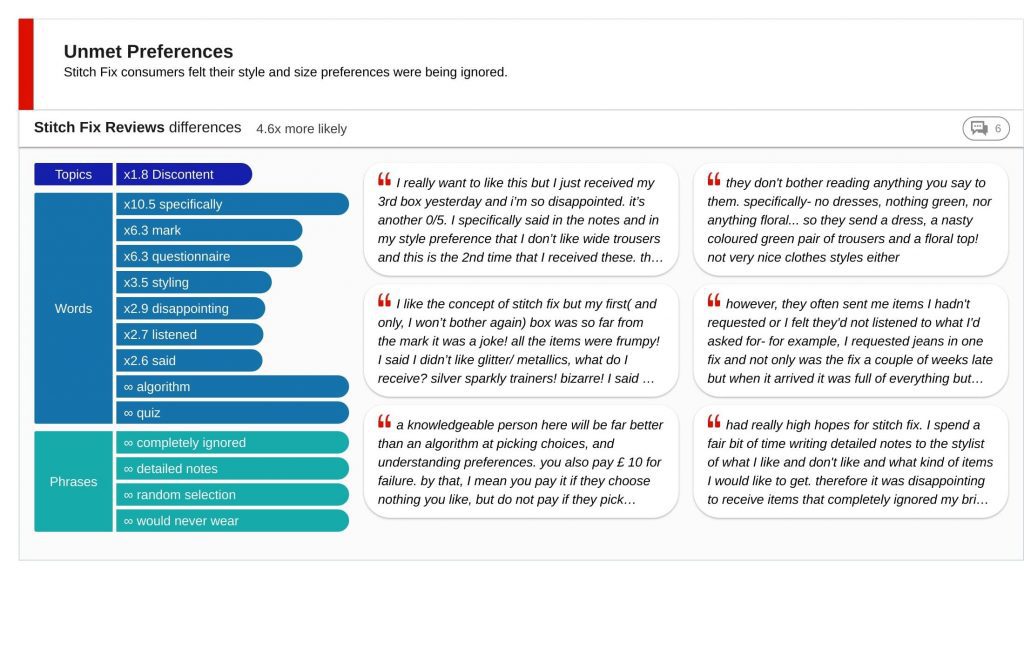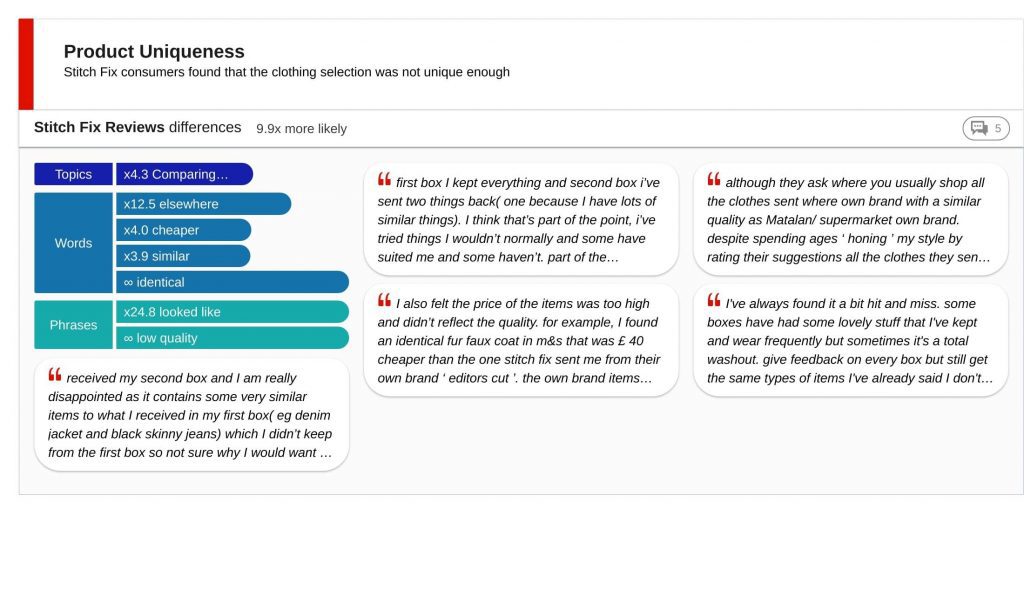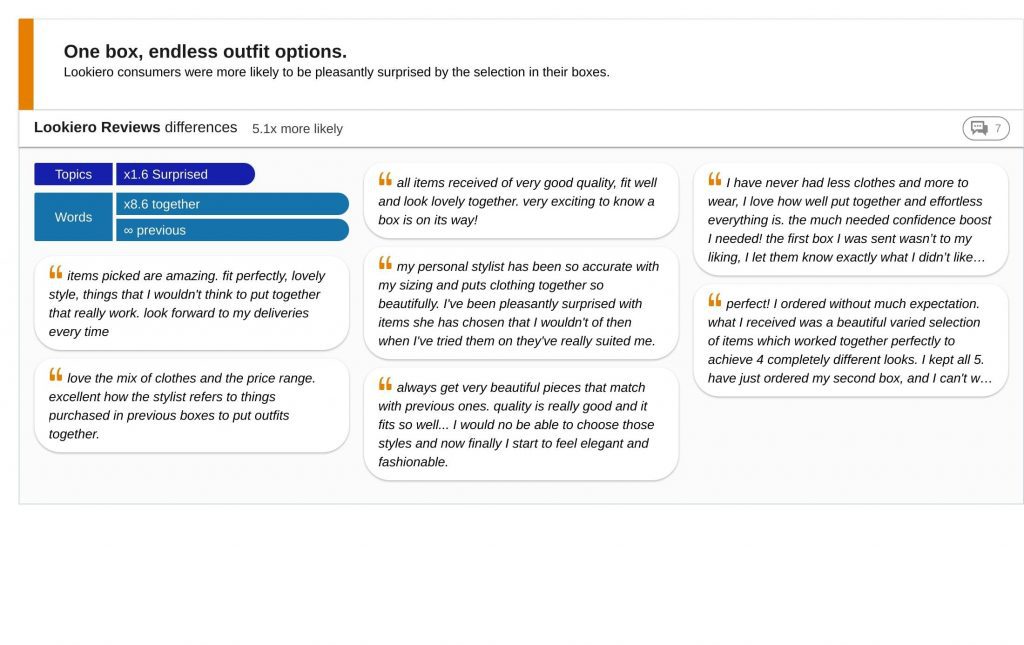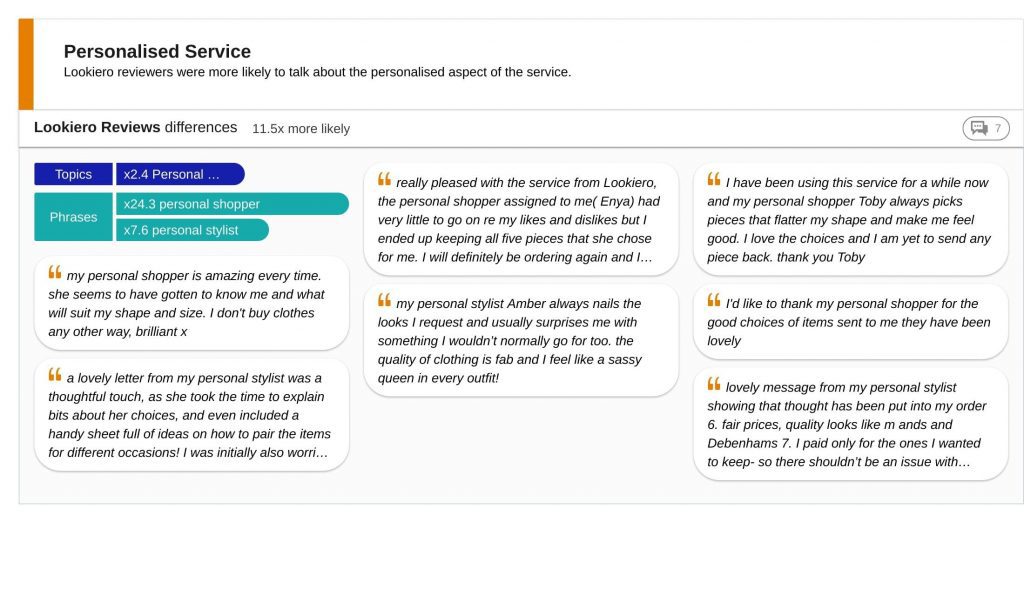That’s hot! Analyzing customer data for fashion subscription boxes

By Laura Castillo, Commercial Associate
Although ‘giant-killing‘ category-disrupting subscription box services have seen great success among American consumers, the concept is just now gaining popularity in the UK. Analyzing customer data can help us understand how consumers feel about these brands, revealing the strengths and weaknesses that could either help or hinder their expansion into the UK.
These brands send curated product boxes to your door on a regular or semi-regular basis. You can find hundreds of product categories including clothing, personal hygiene products, meal kits, and even dog toys and treats. The subscription box model offers consumers a whole new level of online shopping experience. With non-essential shops closed during the pandemic and many consumers frustrated and bored with lack of retail opportunity, a new segment of customers have decided to give these services a try.
We sought to discover more about the consumer experience for clothing subscription boxes and to find customer insights that reveal people’s opinions after they signed up to receive a monthly fashion-curated box.
In order to do this, we turned to text analysis. We took thousands of TrustPilot customer reviews for two popular fashion subscription box brands – Stitch Fix and Lookiero, and compared all these reviews to each other. Analyzing customer data enables us to uncover good, bad and ugly opinions unique to each brand.
Stitch Fix
Stitch Fix consumers considered that the subscription box service was a good alternative to the ‘traditional’ shopping process of browsing and trying on clothes. Many mentioned in their reviews that they loved the idea of signing up for a service that would help them upgrade their wardrobe and overcome the struggle with choosing new styles or finding the right sizes. This was especially true for those who indicated that they hated to shop for clothes or had no time to do so.

Initial disappointment
For those who missed shopping in stores during the lockdown, signing up for a monthly subscription was the perfect solution. But despite these positive expectations of the experience, a common topic was disappointment where many consumers felt that their instructions on their clothing preferences were not met. We noticed how lots of Stitch Fix customers pointed out inconsistencies with what they asked for versus what they received – in terms of both style and sizing.
A large proportion of the reviews mentioned how the style selections people were given missed the mark. Many people indicated frustration of how they had spent lots of time completing the style questionnaire, explicitly writing their preferences, and yet seeing these preferences being overlooked. These unmet preference issues seemed to lead consumers to the conclusion that the styling service offered was not personalized or curated by a personal stylist, but rather randomly selected by an algorithm.

There’s nothing new here
Besides unmet preferences, there were also unmet expectations heavily indexing in the reviews. Stitch Fix consumers found that they clothes they received were very similar or identical to styles they could easily find elsewhere. In particular, people talked about how they expected the selection of brands and styles to be more unique and fashionable than what they could find in traditional retail stores. Some went further to say that they could find better quality and cheaper clothes in other stores, such as Primark or H&M.
Other reviewers pointed out that the clothes they received in their box were staple pieces of clothing and similar to items they already own, which led consumers to question the value of signing up for the service as they expected to try clothes they wouldn’t normally choose for themselves. This disappointment led them to give the service one last chance or to cancel their subscriptions completely.

Lookiero
While Stitch Fix consumers were not impressed by the style recommendations, Lookiero consumers were far more likely to be pleasantly surprised by the boxes they received. Reviewers consistently talked about how all the items in the box were varied and yet went perfectly together. Customers expressed how happy they were to be able to create different looks with only five items. Additionally, many considered it thoughtful that every new box was carefully selected to match the items in the previous one.

I love my stylist
Lookiero consumers were much more likely to talk positively about the personal stylist aspect of the service, agreeing that having a person who is there to guide style choices made the experience all the better. In fact, many mentioned their personal stylist by name and expressed gratitude for the service provided. Others even mentioned receiving a personalized message from their personal stylist, which is a stark contrast to the algorithm grumblings of the Stitch Fix consumers.

What does this mean?
After analyzing customer data, we can see that while Stitch Fix consumers felt their preferences were not being adhered to, whilst Lookiero consumers talked about the highly personalized service that made them want to return for more.
In a crowded market place, but one where consumers are keen to buy – it’s crucial for subscription box brands to get the curated aspect of their service spot on. Whether that is by fine-tuning the algorithm or by making sure that personal stylists are listening to consumer preferences, what subscribers want is to be delighted by each box they receive. The wrong selection can turn consumers away and they will not hesitate to cancel their subscriptions after the first disappointing try.
Relative Insight delivers scalability to retail customer feedback and review analysis. Analyzing customer data uncovers the exact thoughts, feelings and opinions of your target audience. Our unique comparative approach surfaces only the statistically significant differences and similarities – filtering out the noise to focus your attention on the things that matter.
Contained within this data are answers to important questions your business should care about. What requires fixing? What’s important (and unimportant) to customers? Where are you losing ground to your competitors? Take a look at some other customer insights examples and get in touch with the team today for a personalized demo of the platform in action.
